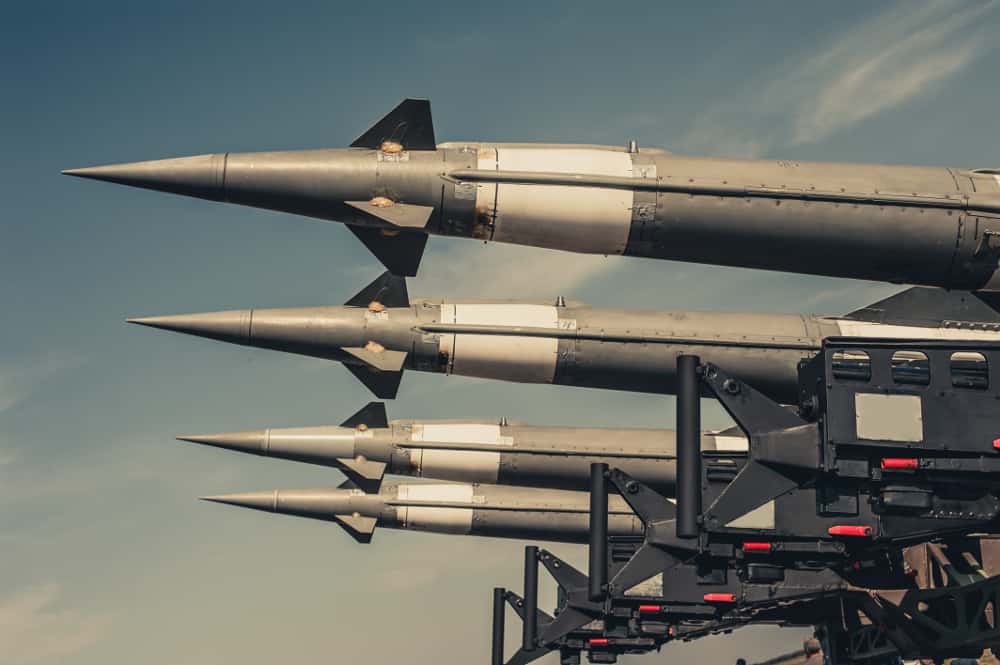Military Nondestructive Testing Examples: Improving Missile Stockpile Reliability

By employing nondestructive testing (NDT) technologies in a rational, systemic manner, militaries are able to improve the reliability of their munitions, vehicles, and infrastructure. Only by testing systematically can militaries prevent the deployment of duds and unsafe or unusable equipment.
Militaries around the globe have employed nondestructive technologies to test a wide variety of hardware for over half a century, from small arms ammunition to reactor containment on submarines, and have learned to trust the
Stockpile Testing as an Example of a Successful Military Nondestructive Testing Program
Missiles have a shelf life. In storage, missile components and housing corrode and degrade over time to the point where they will not accurately travel to their target, will not arm, or will not fire. Using visual inspection techniques, it is impossible to determine with a high degree of reliability which missiles will work and which will not. Instead, militaries rely on a constant rate of failure based on historical missile performance. While this average rate provides a broad sense of stockpile reliability, it does nothing to detect missiles that have failed before their time, and those which have outlasted their expiration date.
If historical data is the only measurement of missile readiness available to a stockpile manager, then all missiles must be retired by their expected failure date. This can significantly reduce stockpile availability, consequently increasing procurement costs. At the same time, it does not guarantee the actual effectiveness of missiles in the stockpile, raising the likelihood of failure during deployment and endangering both warfighters and mission success.
Nondestructive testing techniques, such as ultrasound and eddy current testing, canbe used to provide specific readiness information for each missile in the stockpile. More advanced instruments allow nondestructive testing specialists to visually map the internal components of missile systems or more easily test lightweight structural materials in order to detect flaws and corrosion which can cause issues with launch, flight, or detonation. Faulty missiles will be identified and can be removed from service for decommissioning or overhaul.
Determining Nondestructive Testing Intervals for Missile Stockpiles
Missiles which are proven to retain mission readiness through testing can be certified as useable and can remain in service with their expiration date reset until the next round of testing. To determine testing intervals, stockpile managers rely on a user reliability requirement designated by their superiors, which is the probability that a random missile selected from the stockpile will operate and detonate within specification.
Even missiles which test as operable can still fail during flight. Therefore, the user reliability requirement for stockpiles takes into account flight test success rates as well as nondestructive testing success rates. Since user reliability equals flight test success multiplied by nondestructive test success, and flight test success is an independent variable, stockpile managers must adjust their NDT levels to attain ideal user reliability. Testing more missiles ensures higher user reliability.
However, it is also possible to test too often, investing more resources in equipment and personnel than is necessary to meet user reliability requirements. To prevent cost overruns and inefficiency, stockpile managers should only schedule testing at levels derived from the NDT success rates divided by inventory.
Improving Testing Efficiency with Modern NDT Equipment
While stockpile managers are expected to test missiles at specific intervals, they are also constrained by the resources available to them. Testing with old, slow, and bulky equipment can limit the number of tests that can be performed in a year. As stockpiles and testing quotas increase, antiquated NDT equipment poses more and more of a challenge for stockpile managers attempting to fulfill their duty. At the same time, advances in equipment capabilities render new NDT equipment more capable of detecting failure conditions.
To improve or maintain the necessary levels of testing capacity, managers must procure powerful, cutting-edge NDT equipment. Features that promote ease of use and equipment capability are most important, such as large, bright touchscreen controls, compatibility with a range of sensors and probes, and a high signal-to-noise ratio. Portable ultrasound and eddy current devices improve the pace of testing and reduce worker fatigue. Proven software that allows technicians to accomplish each stage of testing on-site—including reporting—can also dramatically improve inspection speed and even help simplify testing of complex, variable geometries like composites.
Militaries with successful stockpile management programs routinely use NDT testing at data-driven intervals to maintain acceptable levels of readiness. To do so, stockpile managers rely on efficient NDT hardware and powerful, easy-to-use software. Missile testing is among many examples of the usefulness of nondestructive testing in the military. The same process—using user reliability requirements to determine appropriate testing intervals—can be followed in all areas of military asset management which require materials testing. Likewise, high-quality, efficient NDT equipment is essential to mission success throughout the service.
Zetec has been a trusted provider of NDT equipment to the military for over 50 years. To find the right equipment for your testing program, contact Zetec today.

Zetec’s designers are industry-leading experts in ultrasonic and eddy current technologies, and we can help you navigate any of our NDT testing solutions or devices.
